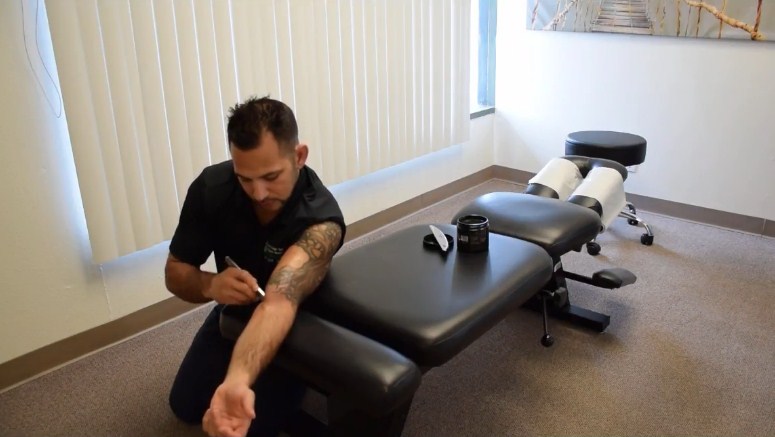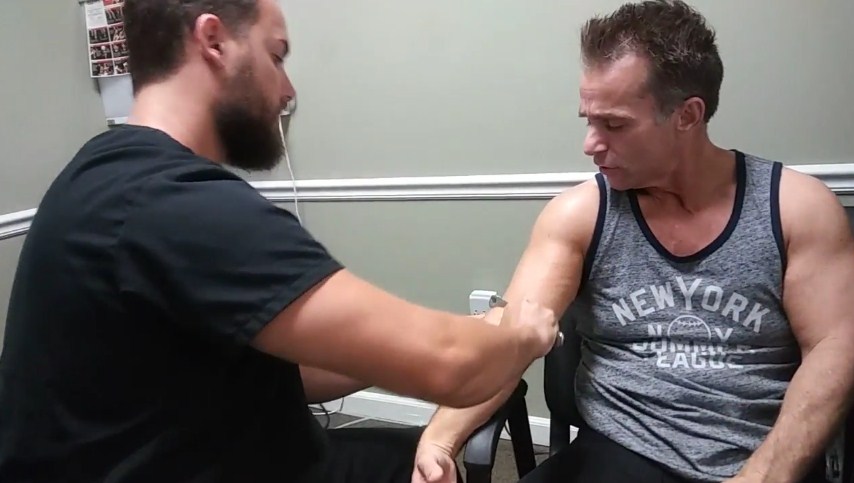How Can Graston Technique Treat Soft Tissue?
If you have complaints related to back and neck pain, achilles tendonitis/tendinosis, carpal tunnel syndrome, golfers and tennis elbow or medial and later epicondylitis, hamstring injuries, quad or IT band pain, knee pain or patellofemoral pain/disorders, shoulder pain or deltoid/bicep tendon/rotator cuff tendinitis or tendinosis, heel/foot pain or plantar fasciitis, you can try using graston technique to treat such conditions, from chronic to acute.
Also, graston technique can be an effective treatment for essentially all soft tissue conditions that you may feel in your body right now

As an introduction, Graston or the Graston Technique are now being popular physical therapy talked by people on social media as its popularity continues to rise
Graston itself is essentially needed to solve a soft tissue treatment technique, which utilizes specialized instruments called graston tools to treat both chronic and acute soft tissue conditions.
With the unique Graston instruments and the right technique, you can do on your own to effectively treat scar tissue and restrictive fascia in which it is also eliminating pain and restoring normal function and range of motion about a joint.
Using graston instruments may interrupt and break down thick and irregular scar tissue, where it will also cause dysfunction of movement and disrupt normal neural pathways leading to pain for the result.
Treating physical condition with the use of the Graston instruments allows for greater soft tissue treatment, with a decreased treatment time.
What are Graston Instruments for Bicep Tendons?
Graston Technique is now being used by many professionals in olympic, and collegiate sports therapy programs.
Still related to graston instruments, most graston tools are specifically designed in stainless steel with rounded, concave and convex edges in the shapes.
However, the edges are not sharp as it is to scrape the skin so it is safe for use.
Mostly, graston instruments are classified under Instrument Assisted Soft Tissue Mobilization also known as IASTM
Those graston tools certified under IASTM are safely used to detect and effectively treat soft tissue fibrosis or chronic inflammation.
With these instruments you can scan over and detect areas of fibrotic tissue.
The use of graston technique to solve soft tissue conditions absolutely needs Graston instruments
According to this, the complete set of Graston instruments usually comes along with 6 specially designed instruments.
Every instrument is uniquely shaped, designed for a wide variety of uses on virtually every body part.
Moreover, every surface of each instrument is designed to fit and contour to different parts of the body
The surface of graston instruments is able to get to where the soft tissue injury is, at least one of the instruments can effectively target that area.
You can scrape where pain in your neck, wrist, back, thigh or foot with complete graston instruments.
In graston instruments, there are six different graston tools used to help break up fascial restrictions or scar tissue
The scar tissue may develop after trauma to muscles, ligaments, tendons, or fascia, which is commonly referred to as soft tissue.
In correlation to this issue, scar tissue forms when tissue does not heal correctly, or it happens under chronic, repetitive stress.
Scar tissue is weaker than normal muscle and connective tissue
Then, every time you do hard activities it becomes chronically sore.
Alongside, ice therapy may help limit additional scar tissue formation, inflammation, and pain.
Doing this can help to break up the next layer of scar tissue, as well as working toward the center of the onion, scar tissue patches.
Ice therapy is commonly utilized post-treatment to limit the bruising, pain, and inflammation after graston has been performed to the scar tissue area.
The main goal of this treatment is to get to the center of the onion or scar tissue patches so your body can fix the original issue in an automatic way.
Additionally, graston technique is not meant to be painful and it should be performed at a comfortably tolerable level to break up scar tissue.
If you are too aggressive with this technique, it may cause excessive pain and actually slow the repair process by flooding the area with inflammation.
Anatomy of the Bicep Tendonitis
This article especially discusses graston technique to treat bicep tendonitis with the needed graston instruments
Everyone has the bicep muscle that is very easy to visualize and you know the muscles related to your hands
In your body, the bicep muscle has two muscle heads in the upper arm functioning to fuse together to form one tendon attaching at the elbow.
On the other hand, the long head of the bicep tendon crosses above the head of the humerus attaching onto the shoulder at the glenoid.
Meanwhile, the short one of the bicep muscles attaches to the coracoid process since it can run down to meet the long head of the bicep muscle where it fuses.
In the anatomy, the bicep muscle has a big role to flex the elbow and the shoulder.
When you are lifting something or slowing your arms down during a golf or baseball swing, you will use these muscles and tendons to help stabilize the movement.
The way of the bicep muscle work is connected with the subscapularis, teres minor, supraspinatus, infraspinatus, pectoralis major, pectoralis minor, and tricep muscles where they support to perform many of your shoulder activities and stabilize the shoulder joint.
Alongside, the ball and socket joint will allow for an incredible amount of motion and movements But, the extra motion is produced by limiting the supportive ligaments and bone structures protecting many of the body’s other joints.
Besides, the shoulder itself will rely heavily on the muscles crossing the joint for protection and stability, and to limit the shearing forces across the joint that can damage the cartilage and bone.
When you are moving your arm, the long head of the bicep tendon will run in a small groove between the greater tubercle and lesser tubercle at the top of the shoulder.
In line with this, this long tendon is traveling down before it is to be muscle.
If there are chronic injuries to the tendon, it may lead to a complete rupture, that will cause the rest of the tendon to be pulled down towards the muscle fibers.
If you flex your arm and it looks like your arm has a big bump in your bicep.
And, if your arm looks like that, the result of the tendon rupturing and the rest of the muscle being pulled into a ball.
At this point, most bicep tendon injuries may not result in ruptures.
In accordance with this, Graston Technique combined with conservative therapies may be good to use to deal with sprains and strains.
Graston Technique to Solve Bicep Tendon and Scar Tissue Patches
If you are a man you may dream of incredible bicep muscle strength with excellent strong tendons attached to your muscles.
Sometimes, some chronic repetitive use injuries damage the tendons more than the muscles.
As a result both muscles and tendons will respond to stress and strain placed upon them.
You will feel the issues when you are working out so hard, which will cause both the muscles and tendons to lay down more fibers to make them stronger to handle the increased stress loads.
Most people may sometimes get the bicep tendon to be very commonly injured, especially for those who have a head forward and rounded shoulder posture.
On the other side, the rounding shoulder places more stress and strain to the bicep tendons in the front of the shoulder where you can feel it with your normal arm motions and movements.
If this goes so many times, this will increase the likelihood of bicep sprains with household chores, sporting events, working out, or lifting weights.
Generally, graston technique can be used to solve scar tissue and fascial adhesion
For your information, scar tissue accumulates in the body whenever tissue undergoes excessive stress and strain.
On the other words, scar tissue is like the body’s duct tape in which it is a short term patch to help support tissue.
Anyway, the scar tissue is not replaced with normal collagen fibers and it is also referred to as fascial adhesions, since it causes restrictions between the body’s fascia.
Feeling stiffness, loss of normal range of motion and chronic pain are coming from patches of fascial adhesions.
Later on, a scar tissue patch may lead to stress and strain in which it will become aggravated and flares up.
If it happens in a long period, it may cause more scar tissue to be added to the outside of the patch
Then, the process repeats itself over and over, which leads to larger accumulation of scar tissue patches that can be said as onion.
Furthermore, scar tissue will end up growing in layers around the initial injury.
At that point, stress to the area will aggravate the outside layers and it can trigger another layer to be formed where the layers further from the center will easily aggravate than the inside layers
That is why scar tissue patches continue to grow in size without causing the inside area to properly repair as it should be.
Thus, graston technique will be needed to stretch the outer layer of the onion or scar tissue patches and break it into several pieces.
The use of graston instruments is to shear force to pull the top fascial layer across the bottom fascial layer.
Performing the pulling motion can help to break up the scar tissue between the layers.
So, the broken scar tissue will trigger healing mechanisms to migrate into the tissue then it will properly repair the muscles and soft tissues automatically.
Graston technique for soft tissue treatments can be integrated with therapeutic exercise and flexibility programs.

This massage technique for tissue treatments will restore proper muscle function and flexibility Also, it can help you exercise, restore strength, endurance, and neuromuscular control.
Anyway, neuromuscular control is also important but it is often not emphasized in many therapy clinics.
Conclusion of Graston for Bicep Tendonitis
All of your pain related to the bicep tendon or any part of your body is based on a comprehensive unit performing many of the repetitive tasks at home, work, and recreational sports.
Doing hard activities may lead to injuries to one area of the musculature which often indicate that additional damage and it has been incurred by other muscles.
If you do graston technique by self, you will prevent the bicep tendon issue at earlier level
Some therapeutic exercises with graston technique can help restore proper strength and endurance to the shoulder and elbow muscles.
And, dynamic exercises such as stability ball push-ups can be performed on the wall or floor as the therapy as well.
If you do it at an unstable surface, you will need more effort and stabilization to all the upper extremity muscles.
In addition, you can also do push-ups on a stability ball that will be useful to enhance neuromuscular learning throughout the neck, scapula, shoulder, upper arm, and lower arm muscles.
You can also perform additional strength exercises on the arm and shoulder strengthening pages.